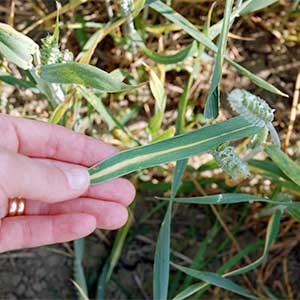Contact
anna.berlin@slu.se, 018-671579
hanna.friberg@slu.se, 018-671876

In this project we investigate if wheat leaves can be used to catch and analyse fungal spores. By increasing our knowledge on how diseases spread, we suggest better control strategies.
Knowledge of disease development in wheat is a prerequisite for good advice on economically and environmentally adapted control strategies. This project is based on knowledge from a previous project about molecular detection with spore traps, which showed that the different spore traps catch different types of fungal spores. We will now study how leaves can be used as spore traps. The objective is to catch and analyse only the fungi sticking to the crop and affecting the plant.
The study is based on plant-health centres' work and the results will be relevant for all cereal producers. In the long term, the project will lead to a greater understanding of life cycles of plant pathogenic fungi and factors that influence their development.
Funding: Swedish farmers’ foundation for agricultural research
Year: 2017-2019
anna.berlin@slu.se, 018-671579
hanna.friberg@slu.se, 018-671876